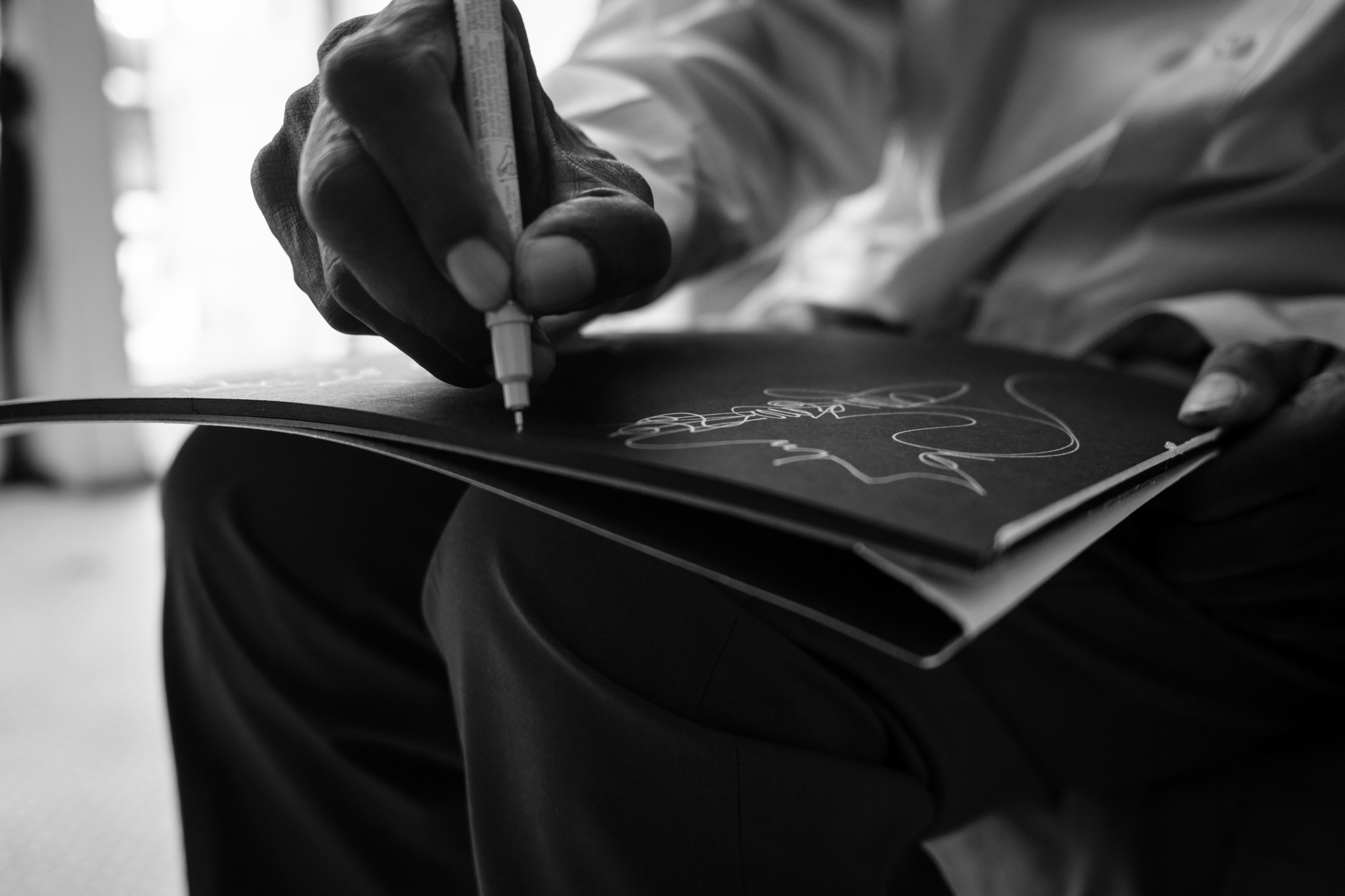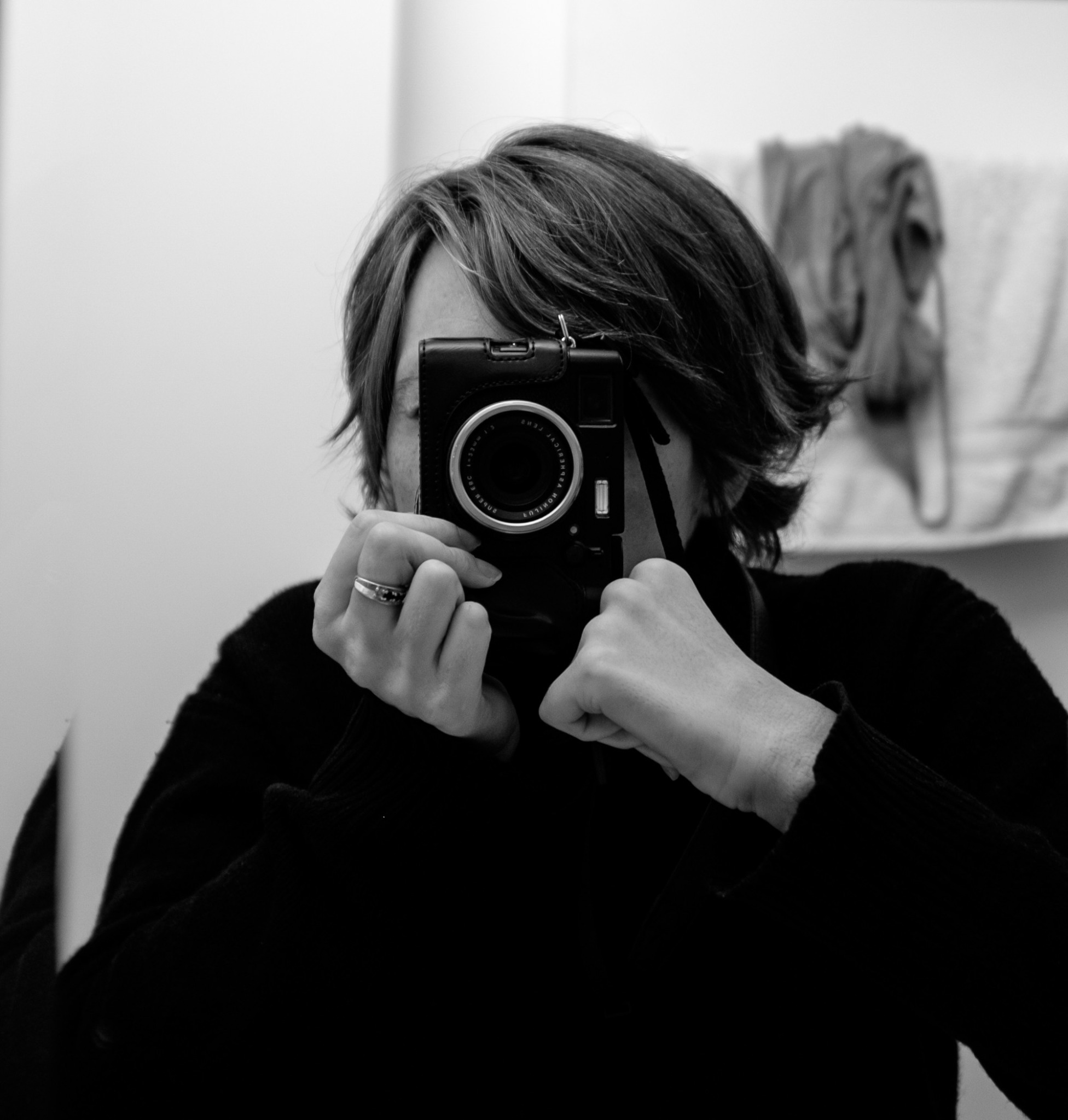Today we’d like to introduce you to Christine Mace
Hi Christine, we’d love for you to start by introducing yourself.
Growing up, I was always drawn to creativity—whether it was drawing, painting, or working with clay, art was my natural outlet. After finishing grad school in 2012, I had the opportunity to work on the documentary Dior and I, and that’s when I discovered the true power of visual storytelling. Seeing how deeply a story could be told through the guise of the lens opened my eyes to a new way of creative expression.
That experience inspired me to pick up a camera myself, and from there, I found a new passion. Photography quickly became my way of capturing the world. I fell in love with capturing images, using Fujifilm’s X100V fixed lens camera. There’s something about a fixed lens camera that I find perfect for catching genuine, unfiltered moments. With a fixed lens, you’re more attuned to your surroundings and the distance from your subjects, allowing me to capture moments from just the right perspective. It’s all about preserving those raw and authentic moments. Photography became my voice—a way for me to connect with the world, explore it, and capture the beauty in everyday moments that often go unnoticed.
This past August, I had the pleasure of exhibiting my work at the Glasgow Gallery of Photography. Over the past six months, I’ve also taken a bold step out of my comfort zone by launching a podcast called Life as a Creative with Christine Mace. It’s focused on exploring the creative world through conversations with curators, gallery assistants, artists, and more. We discuss the ups and downs of making and sharing art, delve into the creative process, and uncover what truly drives artists to create. The first season launched on September 12th, and it’s already been such a rewarding experience!
Alright, so let’s dig a little deeper into the story – has it been an easy path overall and if not, what were the challenges you’ve had to overcome?
Pursuing a career in the arts is rarely a smooth journey. It’s a path that often comes without guarantees or stability, but it’s one you choose because there’s a deep, undeniable pull to create. It’s more than a profession—it’s a calling that feeds your soul. Without that creative outlet, it can feel like you’re just drifting through life, missing the opportunity to say something meaningful, to leave your mark on the world in a way only you can.
A significant part of this journey is constantly seeking support for your work, whether it’s applying for grants or funding to help bring your artistic vision to life. Each application process is a waiting game, and while you hope for the best, there’s always the uncertainty of whether the funding will come through. At the same time, you’re submitting your work to exhibitions, open calls, and other opportunities to get it out into the world. But with every submission, there’s the reality that your work may not be accepted.
What makes this even more challenging is the emotional aspect—dealing with rejection. No matter how hard you work or how passionate you are about your craft, there are times when the answer is simply “no.” Every rejection stings, it’s hard not to take it personally because your art is such a direct extension of yourself. However, part of being an artist is learning how to let those rejections roll off your back, not allowing them to diminish your drive. Rejection is part of the journey, and persistence is key. You have to keep putting yourself out there, knowing that eventually, the right opportunity will come along.
Thanks – so what else should our readers know about your work and what you’re currently focused on?
As a social documentary photographer, my goal is to explore how people connect or disconnect with one another. This work is deeply personal, shaped by my experiences as a disabled individual, often feeling overlooked and judged. I aim to humanize people and capture authentic moments, hoping my photography sparks conversations about real-life experiences, tolerance, and the way our society functions.
My work is driven by intuition and a desire to explore different cultures, environments, and socioeconomic issues. I see the camera as a tool to give a voice to the people, places, and moments I encounter, making them relatable to the viewer. Every day, I document the changes happening around us, focusing on how people interact, adapt, and blend their cultures with daily life. I strive to capture those subtle moments that often go unnoticed but are always there if you take the time to look.
I’m known for solely capturing imagery in black and white. The allure of black and white photography lies in the freedom from the distraction of color. This allows me to concentrate on the interplay of lighting, the chosen subject, the image’s quality, and the emotional response it evokes. Using a compact camera that feels like an extension of my eye, I aim to be an observer—a fly on the wall. Because of the way I shoot, I can easily blend into the surroundings and remain unnoticed while capturing images, allowing me to stay in a creative space.
What sets me apart from other photographers, is my vision and the way that I shoot. As a photographer, who happens to be disabled I have a unique way of doing things. I shoot from my lap, and most of the time—about ninety-eight percent—I shoot blind, meaning I don’t use the viewfinder or LCD screen to compose my shots as most photographers do. My disability prevents me from raising the camera to eye level, so I capture moments from a distinctive, lower vantage point. This fresh perspective brings something unique to my work that differentiates me from other photographers.
Do you have recommendations for books, apps, blogs, etc?
I find an incredible amount of creative inspiration, motivation, and even comfort in reading biographies about anyone and everyone. Whether it’s an artist, a historical figure, or someone from a completely different field, learning about their personal journeys and challenges opens my mind to new perspectives and fuels my creative drive. There’s something about reaching into the lives of others that helps me connect the dots between the personal and the universal seeing how different people have navigated their struggles, ambitions, and successes gives me a sense of renewed energy to pursue my own journey.
I’m equally, inspired by photography books from legends like Richard Avedon, Ansel Adams, Guy Bourdin, Dorthea Lange, Richard Sandler and many others. Their work is not only visually stunning but also thought-provoking, pushing the boundaries of what photography can express. Flipping through their books, I get a firsthand look at how they approached storytelling, composition, and light, and how they captured raw emotion through their lenses. These photographers have left an indelible mark on the world of visual arts, and their ability to shape narratives through images has a major impact on my own creative process.
Together, biographies and photography books are like a wellspring of knowledge and inspiration for me. They remind me that the creative journey is full of twists and turns, and that staying curious and open to other people’s stories can spark ideas and help me grow as an artist.
Contact Info:
- Website: https://www.christinemace.com
- Instagram: https://www.instagram.com/christinemace/
- Other: https://podcasters.spotify.com/pod/show/christine-mace








Image Credits
Christine Mace


